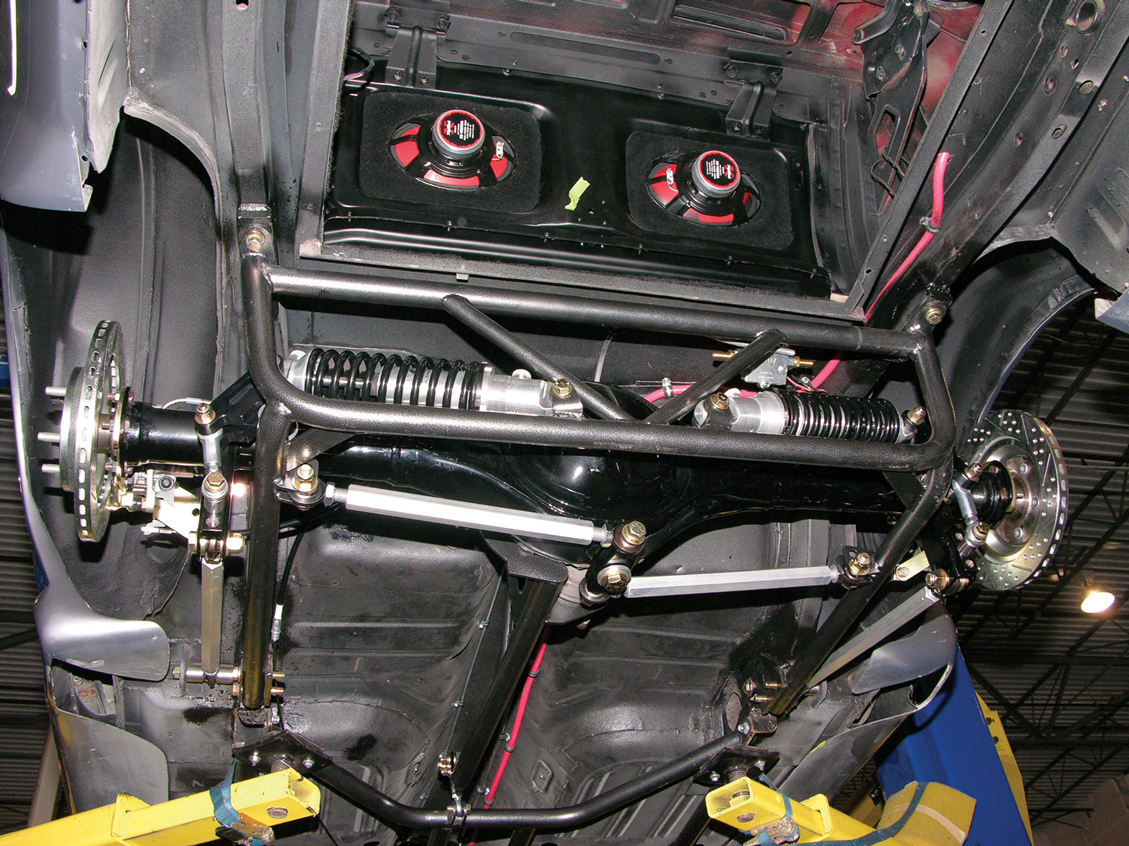Brakes

We’ve already tempted and teased our readers with a behind-the-scenes tour of the Unique Performance Shelby continuation cars—the GT 350SR and the GT 500E (Ford Builder, Mar. ’05, page 67). Many of you probably lust after one or both of these cars, but not all of us can afford to purchase one yet. And because of their limited numbers, their prices do, unfortunately, put them out of reach of many of us Ford enthusiasts. That’s the bad news. But there is good news; don’t assume that because you cannot buy a genuine continuation Shelby, you can’t build a car that drives just like one. Unique Performance sells not only the cars as complete packages, but they understand the situation quite clearly and have made available many of the individual parts and assemblies used to build their cars.

The Ford Mustang was one of the first cars to offer disc brakes as an option, but they were not a big hit with buyers when they were first introduced. Most buyers were happy to buy a base model with a six-cylinder engine or a slightly improved version with a 289 backed by an automatic transmission. This was the standard Mustang package that most Mustang owners wanted in those days—grocery-chasers that people had no intention of using to sit on the pole of the Indianapolis 500. Aside from the Brickyard, that’s all changed, as standard drum brakes are no longer considered standard fare, and car enthusiasts now know the benefits of full disc brakes. It’s hard to find a car today without them, at least on the front brakes.

The late ’60s was a good time for automobile enthusiasts everywhere. For Chevrolet specifically, it remains a time when the company produced vehicles that are among the favorites of Bow Tie aficionados. Who wouldn’t want a ’67-’69 Chevy Chevelle, Nova or, of course, the ever-popular Camaro? The design of these vehicles, and many others from that era, has stood the test of time, and car manufacturers today are even reverting back to the styling cues of these classics when designing modern production cars.
Have you ever noticed how some people can take their car to the strip and look as if they’ve raced all their lives, while others look totally out of control in the bleach box and during staging? More often than not, the driver with the calm, cool and collected approach seems to regularly trigger the win light. The reason for this smoothness isn’t completely initiated by the driver; in most instances, it is the correlation between man and machine.
There’s no denying the popularity of Camaros; they have been a rodding favorite since their initial release in 1967. The first-generation Camaro has always been an enthusiast car because it is small, lightweight and had a sports-car-design feel to it. Underneath, the early Camaros were based on a Nova platform and featured many good mechanical attributes. Right from the start, they became a popular choice for teenagers and young adults, and most of the performance enthusiasts wanted the SS model that came with a choice of a strong-running small- or big-block engine. Things haven’t changed much, because they are still a popular choice for enthusiasts to restore or modify.
The automotive world became a different place when Chevrolet introduced the new ’55. Prior to that time there were many Chevy buyers, but after the ’55s were released there were newborn Chevy enthusiasts. The new Chevys were not only great-looking, but they were also powered with what would become one the finest V-8 engines available anywhere. There was an instant attraction to the ’55, and the interest continued to grow once the ’56 and ’57 were introduced. Fortunately, all three model years became extremely popular, so Chevy enthusiasts took care of them, and many nice examples remain today.
If you are driving down the highway in an older car, you are at a major disadvantage if you have to make a quick stop. Many of the high-performance cars being built today have fantastic stopping power, and if you can’t stop as well as the car in front of you, that could certainly be a big problem. The owner of this ’55 Chevy improved it with front disc brakes that work well, but he wanted the Chevy to stop even better, so he decided to add rear disc brakes.
In the eyes of the Chevy enthusiast, ultimate acceleration reigns supreme. Everything plays second fiddle in the performance-oriented minds of many enthusiasts, including handling, comfort and so on—besides, those things are tough to quantify. Acceleration and top speed are what we are into and unfortunately, all too often, last on the performance priority list is braking. Remember, no matter how quick or fast a particular Chevy is, and no matter how well that Bow Tie handles, no matter how plush it is, no matter how straight the body panels are or how crafty it’s built, eventually you have to get the thing to stop.
With tech and how-tos that might benefit you for both street and/or strip application. Sometimes those elements are major, other times they are far less significant, but nonetheless helpful. We also pay particular attention to things that are of interest, up to and including the reasons why an owner did not win at a car show. There are 55 photos here, each with a bit of info. Many may pay dividends for you sometime in the future, so sit back, learn, laugh and enjoy.







